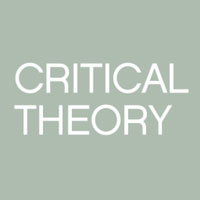Pragmatic Theory
The second in Abram's fourfold division is pragmatic mode. The theories of this mode emphasize the reader's relation to the work. Towards the end of 19th century, pragmatism became the most vital school of thought with in American philosophy. It continued the empiricist tradition of grounding knowledge on experience and stressing the inductive procedures of experimental science.

The pragmatist believed in the progress of human knowledge and those ideas are tools whose validity and significance are established as people adapt and test them in physical and social settings. For pragmatists, ideas demonstrate their value insofar as they enrich human experience.
Pragmatic theories emphasize on the reader’s relation to the work. The work is treated as something that is constructed to achieve certain effects on the audience. Effects may be for the aesthetic pleasure, instruction or any kind of emotion. Despite the fact that pragmatic criticism originated in the Roman times, Philip Sidney, a Renaissance critic, is one of its most influential theorists. For Sidney, poetry has a clear-cut purpose to achieve certain effect in an audience. Good poets are those who write both to delight and teach, or in other words, for delightful instruction.
Furthermore, the objective of all arts and sciences is to lift human life to the highest altitudes of perfection. Therefore, virtuous action is the goal of all learning. Poets desire either to improve or please, or to unite the agreeable and the profitable. Fiction composed to please should be very near to truth, so that the play may not demand unlimited belief.
Horace is particularly interested not in defining what a poem is and what literature is, but in practical questions of how the poet may delight and instruct an intelligent reader. He says that “painters and poets have always had an equal privilege of daring to do anything they wish”. Therefore he is not held in the question of whether a praiseworthy poem is the creation of nature or art, but in the relation of the poem to the reader.
Longinus, “On the Sublime” has tried to balance and blend inspiration and rhetorical mastery. He mentions five elements that help create elevated language and add to sublimity. Two of them are the qualities of an author: the author’s “power to form great conceptions” (elevation of mind) and “vehement and inspired passion”, and three of them namely “formation of figures of speech, noble diction and dignified and elevated composition” are the features of a poem. The interest in the effect of objects on the mind went together with the interest in ‘sublimity. Addison, Burke, Kant and Schopenhauer also defined sublimity with interest in the audience. While dealing with sublimity, Longinus considers the tropes, the work itself and the author.
In response to the traditional complaints about poetry which blame it to “be a waste of time, mother of lies and nurse of abuse”, Sidney argues that poetry teaches and delights by completing that which nature has always been trying to complete. He is thus directly talking about the relation of the work of art with the reader. Dennis has also talked about the influence of Longinus’ treatise on the sublime with respect to its feeling in the reader.
Addison basically deals with the effect of the work on the reader in his essays “On the Pleasure of Imagination”. He goes beyond Longinus, Sidney, Dennis and other critics who merely explain that literature delights and teaches. He calls pleasure of imagination as “primary” – those resulting from our immediate experience of objects and “secondary” – those which arise from our experience of ideas of such objects. At this point Burke slightly differs in the sense that he not only counts upon the subjective aesthetic experience of the reader but moves on to a discussion of what causes a response from the reader.
Like Addison and Burke, Hume emphasized the psychology of reader and audience. Readers’ sentiments in his view, are affected by time, place and situation. He proposes a certain state of mind of the reader as the source of the standard of taste. The reader must exhibit “a perfect serenity of mind, a recollection of thought; a due attention to the object, a delicacy of imagination and the lack of prejudice.
Mill, a follower of Jeremy Bentham’s utilitarianism, accepts the utilitarian viewpoints that all human acts should help the greatest number of people to achieve the greatest happiness. But by not associating poetry with rhetoric and persuasion. He dissociates over utility from poetry, but maintains its use rather an indirect social purpose. Poet’s duty he states, is to express his inner state sincerely and truthfully and by doing so, poetry must purify the emotions at a deeper moral level. This makes poetry’s cultural and social functions consistent with utilitarian aims. Mill’s views about the purposefulness of poetry at the deeper level however supposed Bentham’s utilitarian view which thought to be subjective, untruthful, full of passions and prejudiced and socially harmful.
Fish’s criticism emphasizes the role of reading and role of the text. He takes the texts as products of humanly constituted models having no autonomy or life of their own. The text is a construct of readerly conventions – the products of an “interpretive community” which controls the interpreter. The meaning of text is based on the issue of power, on the authority to establish and control reading and on the number of communities. Fish dissociates himself form the concept of absolute indeterminacy of meaning claimed by deconstruction and claims that “determinacy and decidability are always available.
Critical Theorist (Pragmatic)
Horace
Longinus
Sir Philip Sidney
Stanely Fish
 |
bachelorandmaster.com |